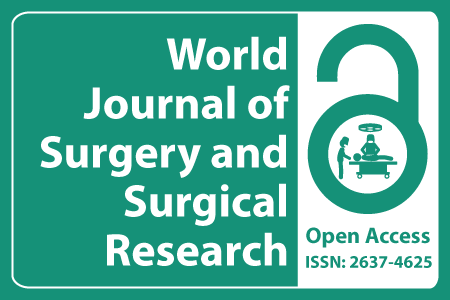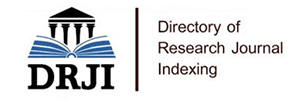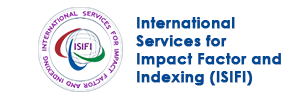
Journal Basic Info
- Impact Factor: 1.989**
- H-Index: 6
- ISSN: 2637-4625
- DOI: 10.25107/2637-4625
Major Scope
- Cardiac Surgery
- Surgery & Surgical Research
- Vascular Surgery
- Urological Surgery
- Aesthetic & Cosmetic Surgery
- Spine Surgery
- Anesthesiology
- Ophthalmology & Eye Surgery
Abstract
Citation: World J Surg Surg Res. 2019;2(1):1172.DOI: 10.25107/2637-4625.1172
Indications for the Safe Performance of Laparoscopic Sacrocolpopexy (LSC) for Pelvic Organ Prolapse (POP)
Tetsuya Ishikawa*, Yoshiyuki Okada, Shougo Nishii, Koji Matsumoto and Akihiko Sekizawa
Department of Obstetrics and Gynecology, Showa University School of Medicine, Japan
*Correspondance to: Tetsuya Ishikawa
PDF Full Text Research Article | Open Access
Abstract:
Objective: Laparoscopic Sacrocolpopexy (LSC) is thought to be an ideal surgical procedure for
pelvic organ prolapse. However, the indications for LSC and factors affecting the safety of the
operation are not clear. We therefore retrospectively analyzed our previous cases.
Methods: A total of 183 women with symptomatic prolapse who underwent LSC were retrospectively
evaluated. The complications, operative time, volume of bleeding, and factors related to the surgical
outcome that were increased + 1.5 S.D. above the mean were examined. Postoperative infection was
defined by CRP elevation on postoperative day 3. We evaluated complications that occurred in the
2 years after surgery.
Results: The mean and mean + 1.5 S.D of operation time, bleeding volume and postoperative day 3
CRP were (189.1, 240) min, (61, 162) ml and (2.5, 4.2) ml/dl, respectively. The operation time and
bleeding volume tended to be increased in cases with large uterine fibroid. The CRP levels tended
to be high in cases with intraperitoneal adhesion. Although the standard operative procedure of
LSC includes supravaginal hysterectomy, uterine preservation was possible in two cases, and three
patients underwent total hysterectomy. With the exception of 3 cases of bladder injury, there were
no other complications. Eleven cases showed postoperative recurrence. Postoperative vaginal wall
erosion was found in 1.8%. Stage 2 recurrence was confirmed in 3.6% that were followed for two
years.
Conclusion: LSC is an effective method for treating POP. On the other hand, the pre-operative
evaluation of patients is very important for the safety of the procedure.
Keywords:
Indications; Laparoscopic sacrocolpopexy; Pelvic organ prolapse
Cite the Article:
Ishikawa T, Okada Y, Nishii S, Matsumoto K, Sekizawa A. Indications for the Safe Performance of Laparoscopic Sacrocolpopexy (LSC) for Pelvic Organ Prolapse (POP). World J Surg Surgical Res. 2019; 2: 1172..













